
Cape Cod is "Coyote country"
Cape Cod Life / April 2016 / History, Nature, People & Businesses
Writer: Melissa Manderson / Photographer: Jonathan Way
Cape Cod is "Coyote country"

Cape Cod Life / April 2016 / History, Nature, People & Businesses
Writer: Melissa Manderson / Photographer: Jonathan Way
Once foreign to the area, this wildly resourceful animal can now be found across the peninsula
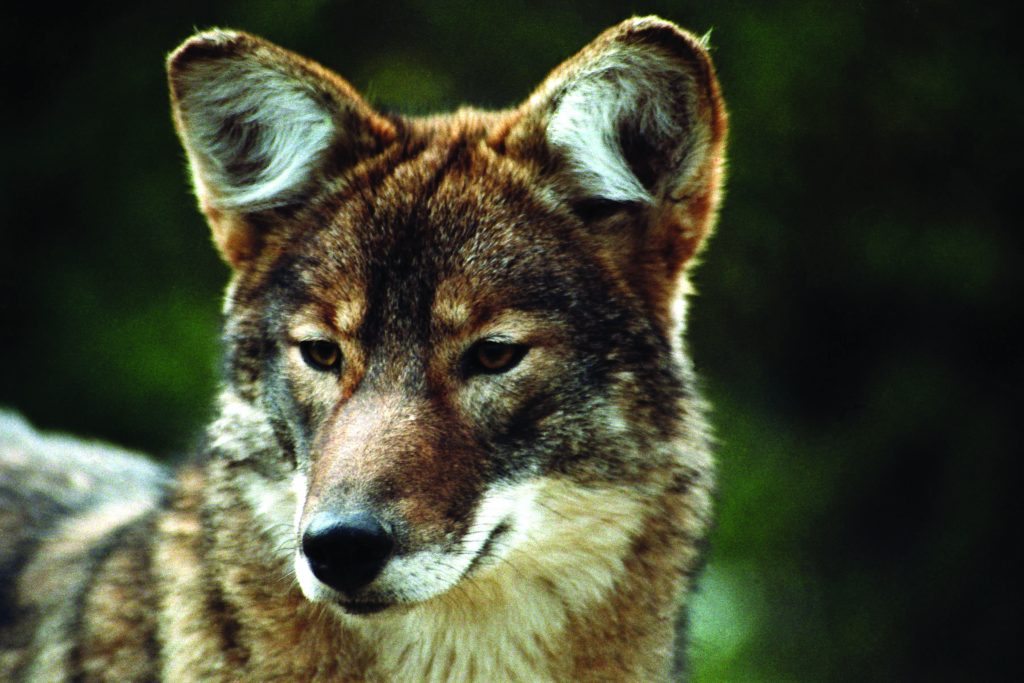
Photography by Dr. Jonathan Way
Amy Blake moved to Cape Cod from a small town in Ohio in the summer of 2005, renting a cottage beside scenic marshlands in West Barnstable. One evening she heard an unfamiliar sound coming from the yard: wild animals were howling in the darkness. “I was petrified,” Blake recalls. “I didn’t know what to do so I called my neighbor and pleaded for her to come over.”
Kathy Blackwell, and her friend Tim came quickly to Blake’s rescue. The longtime Cape residents brought wooden spoons, pots and pans; they yelled, and banged on the pots and pans until the animals ran off. Throughout, Blake remained frozen by the door. Her rescuers, after successfully scaring off the unwelcome guests, had a good-natured laugh at her expense. Prior to that night, Blake had never seen—or heard—a coyote.
“I was standing pretty close to the door, and they just thought it was so funny,” Blake says, “and here I am having this traumatic experience.” Moments later, the trio noticed that Blackwell’s cat, Cubby, was perched on the roof of Blake’s cottage—likely the reason for the coyotes’ visit. For the remainder of her stay, Blake never saw the coyotes again, but she heard them frequently and stayed inside on those nights.
Blake’s story may sound familiar to Cape Cape residents and visitors alike. Eastern coyotes (Canis latrans) have been living on the Cape since at least 1985, but in recent years the animals seem to be flourishing and have been spotted all over the peninsula. In this article, local wildlife experts share some of their research on the Cape’s top predator, discuss personal experiences, and offer suggestions for residents—especially pet owners—on cohabitating with coyotes. The article also examines the coyote’s family structure and prey, and researchers speculate on how the coyote arrived here in the first place.
“Public perception is that [coyotes] are thriving,” says Diane Byers, Chatham’s animal control officer, “but you would be surprised at the actual number.” Coyotes have a distinct howl—a series of yips and barks—and one or two of the animals communicating is often mistaken for several. Byers says she fields a few calls per month from locals reporting a coyote passing through their neighborhood. “Just because animals are out during the daytime does not mean they are rabid,” she says. “They might be scavenging for food or getting food for their pups.”
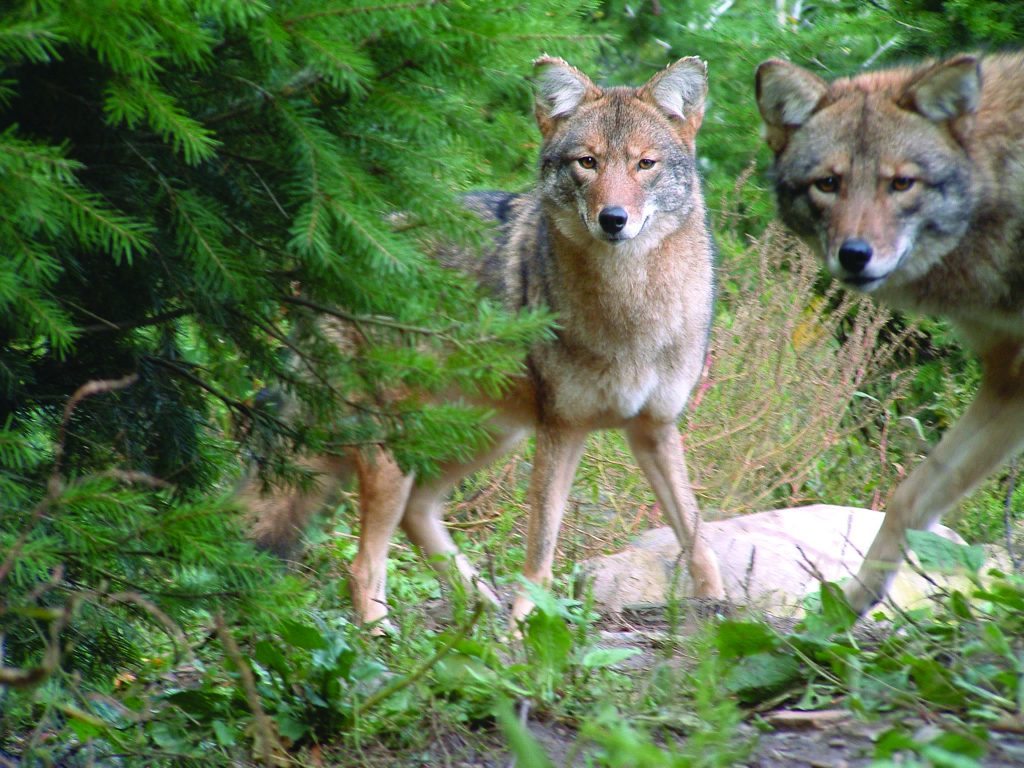
Photography by Dr. Jonathan Way
Across the Cape, Sandwich Police Dept. clerk Lori Cannon receives a fair amount of coyote-related calls, but describes the threat as minimal at best. “A lot of people have some unnecessary fear,” Cannon says. “If the coyote is not sick or injured it’s just walking through, because that’s what they do.”
A survey of Cape Cod Life staff produced several coyote stories: the animals have been seen all over the Cape, from Bourne to Brewster, and even running along Route 3. One staff member sees coyotes passing through her yard in Falmouth. She says they seem skittish, or more afraid of her than she of them. Recently, she has seen a local pack so often she recognizes them by their coats and colors, and has even given them names. Coyotes are also populous on Cuttyhunk of the Elizabeth Islands, yet it appears the animals have yet to make it to either Nantucket or Martha’s Vineyard.
The coyotes found on Cape Cod vary in color. Typically, the animals have a grey or reddish muzzle, the color extending behind the ears and neck, with white fur below the chin and underbelly. Signature details often include a black line extending from the eyes, and a bushy tail with a black tip. The length of the coyote’s body generally ranges from 42 to 55 inches, with females measuring slightly smaller.
Coyotes have a complex social structure, and a pack may consist of a mating alpha pair, two other beta or supporting coyotes and the alphas’ most recent pup litter, the omegas. Alpha pairs are believed to be monogamous for life. Betas are usually offspring from previous litters that have stayed behind for further parental instruction, and to help maintain the pack’s territory. Much like in human families, the care of playful pups creates a welcome distraction from the work of daily coyote business.
The coyote’s diet consists mainly of carrion, meadow voles, other rodents and rabbits; they will also take down an occasional deer. Coyotes are opportunistic feeders and on the Cape there have been reports of the animals eating fish. They will also eat berries and plants in winter. While coyotes do consume garbage and have taken many pets, Paul Morey of the USDA National Wildlife Research Center states that this constitutes the smallest percentage of their diet.
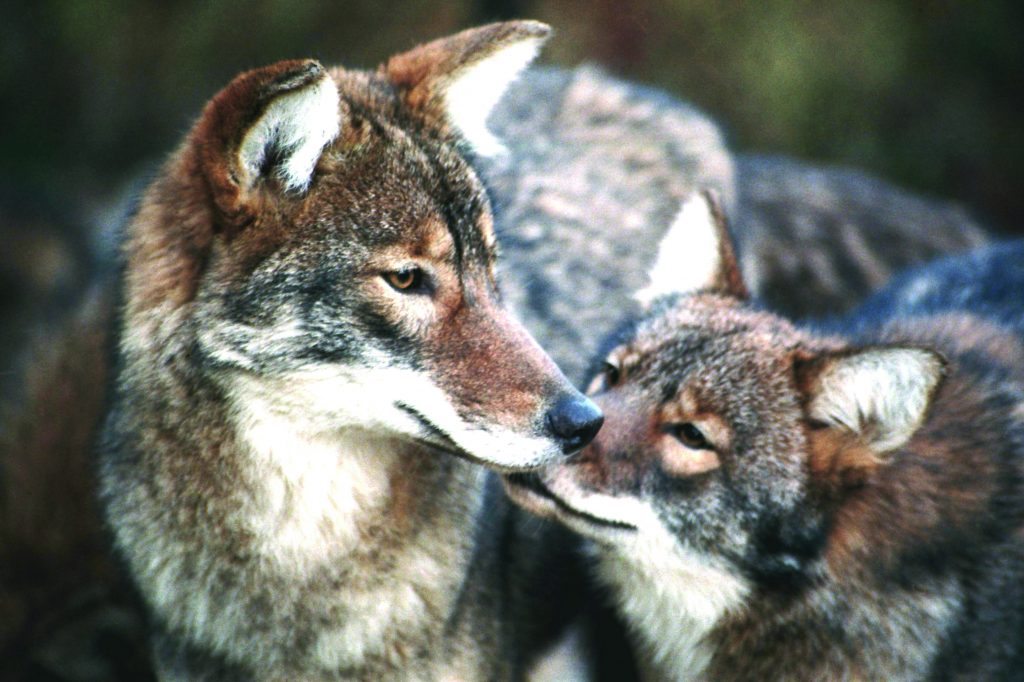
Photography by Dr. Jonathan Way
Coyotes prefer to live in open wooded areas, bushes and marshlands, generally avoiding residential and commercial areas. They seek shelter to avoid people, and will use a den for a short time following the birth of a pup litter.
Paul Wightman, who worked for the Town of Orleans’ Natural Resources Department as an endangered species shorebird specialist from 2012 to 2015, says the area surrounding Nauset Beach is an ideal habitat for coyotes. The region is not very developed and features a fresh water source and an abundance of meadow voles. “It is a natural environment where coyotes can survive and thrive in,” Wightman says.
Byers, who assisted Wightman in monitoring plovers and Eastern terns at Nauset Beach, says while in previous years the main threat to these birds included crows and erosion, in 2015 it was the coyote. Wightman explains that the standard enclosures used to cover plover nests were failing to protect the birds. “[The coyotes] were digging under them, eating the birds and the eggs,” Wightman says, “and the plovers’ numbers were alarmingly low.”
In agricultural Southern states, lethal predation is sometimes used to remove coyotes entirely, but that, Wightman says, “is an unpopular option on the Cape.” After submitting data to the federal government, Wightman and Orleans’ natural resources manager, Nate Sears, took a more humane approach in 2015 to increase plover numbers without harming one of the bird’s natural predators. Their solution was to electrify the enclosures, an effort that resulted in perhaps the highest productivity of plovers in the region. “The birds are not big enough to be affected [by the electricity],” Wightman says, “and the coyotes’ behavior is redirected—and they leave the nests alone.”
A Waltham resident, John Maguranis is Massachusetts’ representative for Project Coyote, a national organization whose mission is to educate the public about coyotes. “They are amazing animals,” Maguranis says. “Most people think coyotes are running around eating children but they aren’t predators of people.”
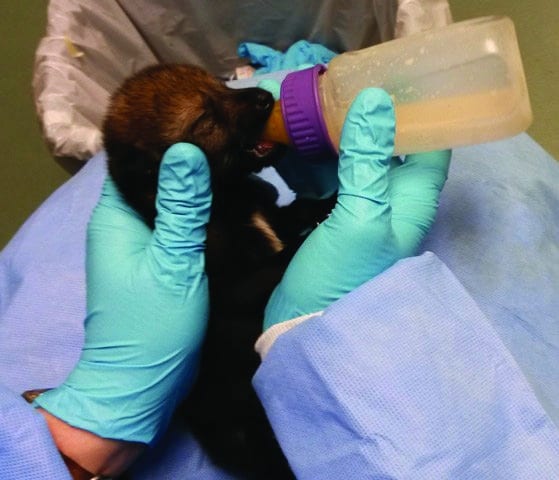
Photography by Dr. Jonathan Way
As the animal control officer in Belmont for the past 15 years, Maguranis says he began to receive a lot of coyote complaint calls soon after he took the job in 2001. At first, he didn’t know how to address the issue—but the calls kept coming. In 2002, Maguranis contacted Dr. Jonathan Way of Barnstable, the founder of Eastern Coyote/Coywolf Research, and author of Suburban Howls: Tracking the Eastern Coyote in Urban Massachusetts (2007). “Dr. Way responded to my concerns, took me under his wing, invited me to participate in some of his research, and taught me a lot about coyotes,” Maguranis says. “I wouldn’t be where I am today without his help and guidance.”
The Eastern coyote species found on Cape Cod is often referred to as the “coywolf.” For more than a decade Way has been researching this hybrid animal, conducting field studies across the Cape, gathering data, and advocating for legal protections for this unique predator.
In Massachusetts, coyotes can be hunted six months per year, from mid-October to early March. Way views this as a tragedy. “The unfortunate reality remains,” Way states, “that it is easier and far less expensive to acquire a hunting license ($30) than it is to obtain the permits and [funding] necessary to study and research these animals.”
Way estimates there are 200 to 250 total coyotes on Cape Cod. According to an article on Way’s website, easterncoyoteresearch.com, “recent genetic research on Eastern coyotes indicates that they are actually a hybrid between Western coyotes (Canis latrans) and Eastern/red wolves (Canis lyacon) … They are larger and genetically distinct from both Western coyotes and Eastern/red wolves.”
Brewster resident Peter Trull, a biologist, naturalist and a teacher at the Cape Cod Lighthouse Charter School, has been studying and photographing local wildlife for more than 25 years. In his book Coyotes in the Neighborhood: An Informative Guide to the Habits and Life History of the Eastern Coyote (2002), Trull suggests that this larger, wolf-like, Eastern-coyote hybrid has always inhabited the region. Others have theorized that the Eastern coyote has, in recent decades, filled a “predatory gap” left as a result of the extirpation of the region’s grey wolf, a practice that began in the mid 1600s with the early settlers.
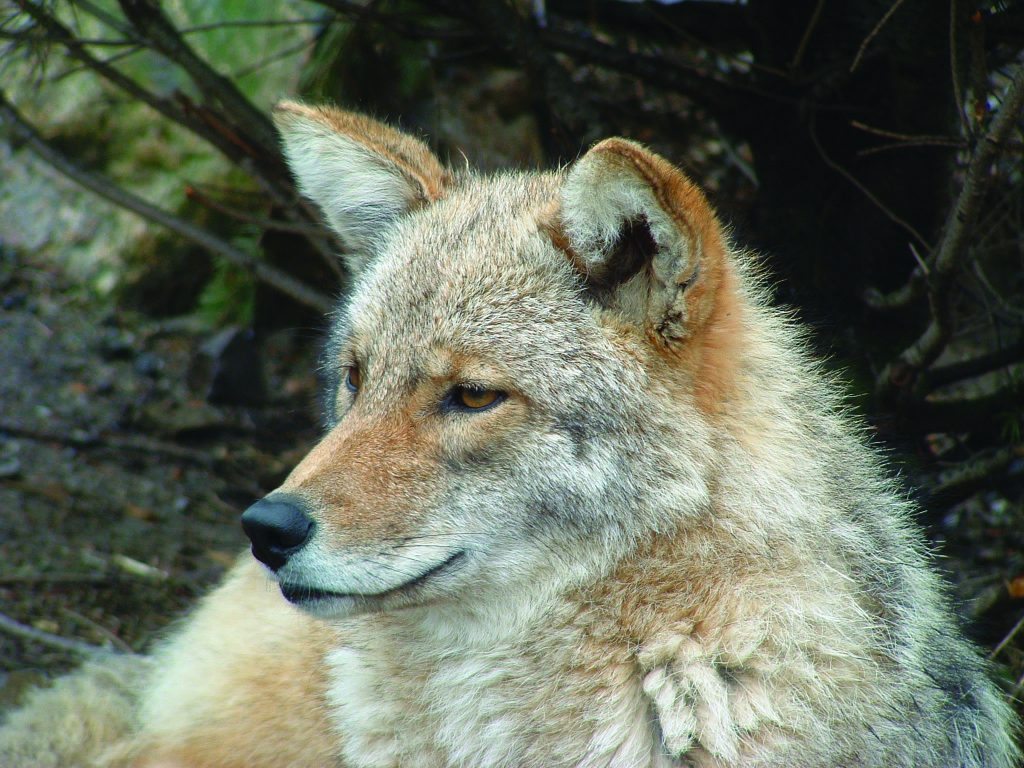
Photography by Dr. Jonathan Way
Trull cites an account of Martin Pring’s 1603 visit to Cape Cod where the English explorer mentions wolves and foxes. At that time there were reports in the region of “deer wolf” or “the Indian dog,” which resembled more of a shrewd, savvy wolf than the smaller Western coyote. Prior to the arrival of Europeans, Native Americans used these animals to aid in hunting, offering food as a reward, but Trull writes that the animals would not be considered “tame” by modern standards.
In his book, Trull argues that prior to the famous Lewis and Clark expedition of 1804, coyotes and wolves were both called “wolf.” “It was Lewis and Clark . . .” Trull writes, “who first separated by distinction the brush wolf of open habitats from the larger timber wolves of the mountainous West.” The “brush wolf” would later be called “coyote.”
Many years have passed since wolves have called New England—and the East coast of Massachusetts—home. But how long have coyotes frolicked here, or at least on Cape Cod? Trull writes that in 1985 an officer at the Otis Air Force Base discovered an active coyote den; this was the first recorded finding of its kind on the Cape.
“Some people say they crossed the bridge or that they swam across the canal,” adds Wightman. “I’ve heard speculation that they may have been brought over by people staying at [the base]. All that matters is they are here now.”
In 2014, Deborah Robbins Millman, director of the Cape Wildlife Center in Barnstable, helped raise an orphaned coyote pup that had been rescued that spring. “We got a call that there was a litter of coyote pups under someone’s shed that [wasn’t] doing well,” she says. “Of the six, two survived: one male and one female.” It was speculated the mother had been hit by a car, or had left the pups, thinking they would not be viable. “Sometimes we just don’t know why,” Millman says, “but in this part of the country the most common cause of death for coyotes is by vehicle collision.”
Just days old, the male pup died shortly after arriving at the center; the female was nursed to health. “We took a great deal of care minimizing human contact so that the pup wouldn’t be accustomed to humans,” Millman says. Volunteers wore gowns and gloves, and were careful to keep talking to a minimum while handling, medicating and bottle-feeding the pup.
Eventually, the pup was deemed “un-releasable” because it was thought she might not have developed a healthy aversion to humans. The animal was placed in a wildlife rehabilitation facility off Cape to be raised with other young coyotes. “It’s our goal to not get attached,” Millman says, “but we don’t get a lot of coyotes in so we were all fascinated by this beautiful animal. We were happy to send her off healthy, knowing that being with the other coyotes was best for her.”
Of course, many similarly cute and cuddly Cape Cod cats and dogs have met their fateful end courtesy of full-grown coyotes. Cubby, the rooftop cat mentioned earlier, later fell prey to a coyote.
With more than 20 years of experience in this field, Millman offers some perspective for residents and pet owners. “Coyotes are opportunistic predators with a healthy aversion to humans,” Millman says. “Most problems are caused when people feed them.” She says a healthy coyote passing by is unlikely to approach a human, yet she advises household pets be kept either indoors or on a leash. “If you see a coyote, make a loud noise, wave your arms, and they will get scared off. Never approach them,” Millman says. “The Cape is home to beautiful wildlife. Use caution and respect them from a distance.”



